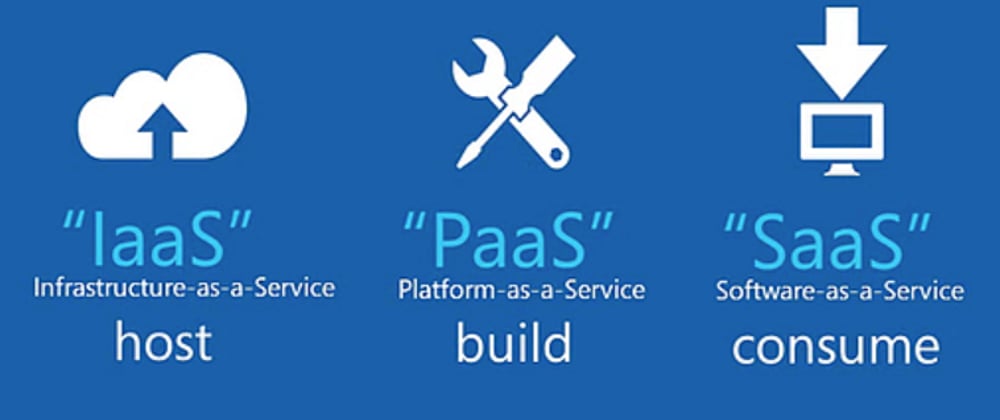Changes are happening and it’s happening very fast, businesses are been over stressed in maintaining a robust and cost-effective IT infrastructure, so as to adapt to the ever-growing changes.
Cloud services have been among the most popular platforms lately, with companies like Microsoft, Amazon, Google leading the way for technology growth.
Cloud computing is providing developers and IT departments with the ability to focus on what matters the must and remove layers of procurement, maintenance and capacity planning. Which will enable the organization to cut cost and minimize the time spent on mundane IT tasks.
Instead of maintaining hardware, you can focus on innovation and scale your application on demand. More and more enterprise are turning to cloud to enable them re-invent their applications and take advantage of a new deployment strategy. Which can help the organization save up to 30% by implementing a cloud-base service.
Cloud computing services comes mainly in three type of service models;
- Infrastructure as a Services (IaaS)
- Software as a Service (SaaS)
-
Platform as a Service (PaaS)
Each of this cloud models have its own set of benefits, which will serve the needs of various business. Choosing between them requires an understanding of these cloud models. When organization evaluate there needs and find out how a chosen model can deliver the organization set of wok flows.
The following are a brief description of the three types of cloud computing models.
1. IaaS
Infrastructure as a service sometimes abbreviated as IaaS, offers a standardized way of acquiring computing capabilities on demand and over the web, the IaaS cloud provider or vendor gives you an entire range of computing infrastructure such as storage, virtual servers, process power, networking hardware, along with maintenance and support.
2. SaaS
The model Software as a Service or SaaS, gives quick access to cloud-based web applications. The vendor controls the entire computing Stack. Which is accessible using a web browser.
This relieves your organization from the constant pressure of software maintenance, infrastructure management, network security, data availability and all the other issues involve with keeping application up and running. The SaaS billing is also a “pay as you go”, which is typically base on factors such as number of users, usage time, amount of data stored, and number of transactions processed.
Development environments can also be done as SaaS. Software developers receive access to the platform where they can build, test and deploy a product, configure it functionality with build in tools and templates.
Examples of SaaS
1. Google Work Space
This top cloud service provide business with access to management, communication and organizational tools and uses cloud for data computing. Gmail, google drive, google form, google sheet, hangout are all SaaS tools that can be access anytime and anywhere.
2. Microsoft Office 365
The series of web services which gives business owner and individuals a platform with tools directly from their web browsers. Users can access Microsoft editing tools business email, communication instruments and documentation software.
3. Sales Force
This is the most popular CRM (customer Relationship Management) in the market that unites marketing, communication and e-commerce. Through cloud computing Sale Force have been able to use the benefits of SaaS to provide to various business access to its services and internal data. Business owners can keep track of there sales, client relations, communications and relevant tasks from any device. The interesting thing about sales force is that it can be integrated into the website. The information about incoming leads will be sent to the platform automatically.
3. PaaS
PaaS which is also stand for Platform as a Service is a halfway between IaaS and SaaS. It offers a partway to a service which allows organization of build, deliver and manage applications with out the need of installing and working with IDE’s (Integrated Development Environments) which are often very expensive. The PaaS model of service makes it easier for developers to focus on writing codes and create applications without worrying about time consuming IT infrastructure such as providing servers storage and backup.
Additionally, users can often customize the features they want included with there subscription. PaaS brings much more value to cloud, enabling organization to reduce their management overhead and lower cost. With the help of PaaS computing model, it is now easier for organizations to innovate and scale their services on demand.
A successful move to cloud isn’t about IaaS or PaaS or SaaS. For any organization, the trick is knowing which model suite your business needs.
To summarize, SaaS would suit your business well if you need cloud base software like email, CRM and productivity tools. IaaS is the perfect option if you require a complete virtual computing plat-form with powerful resources. If your requirement is to develop and test your software and applications, then it better to opt for PaaS. A long migration road map ad good planning will help you achieve value from the cloud.













Top comments (0)